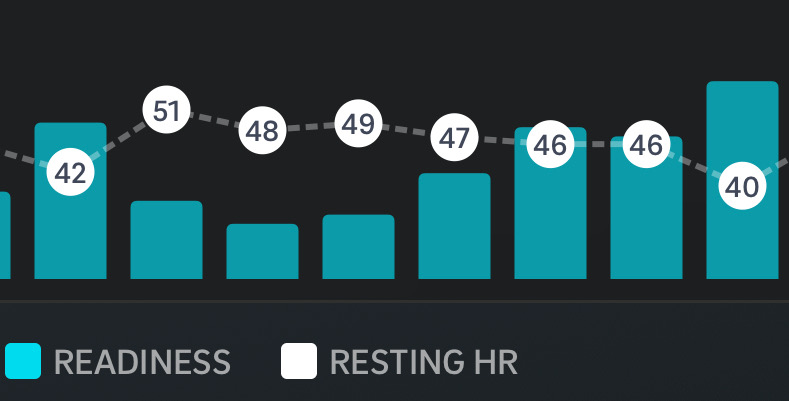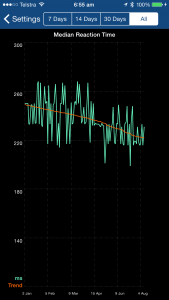Having gone through a number of training camps in the lead up to competition I have had the opportunity to refine my approach. Previously I had never concerned myself too much with the amount of volume I was doing, and if the opportunity came up to train I would generally take it regardless of readiness or recovery. I remember years ago doing 3x one hour intense sessions back to back every Friday, which not so surprisingly left me somewhat wrecked. If there was a high intensity Strength & Conditioning class on at night, I would do it even though I would have a high intensity Jiu Jitsu class scheduled for the next morning. When training at Drysdale Jiu Jitsu for a camp, I would do both the two hours sessions every day that I could.
I think this approach left me in a depleted state, which is not a problem unless it is chronic. I felt that when I was supposed to be putting in my best effort at an intensive Jiu Jitsu class, too many times I would be going through the motions, but would not be putting the intensity and intent into the session I needed to get results.
I have had this conversation with Simon many times around the default medium position. When trying to have a light session, you feel like you are not working hard enough so ramp it up and it becomes a medium session. If you haven’t had sufficient recovery, or the session is too long, you can’t put the work into your session at a high enough intensity and it also becomes a medium session.
What’s so bad about medium sessions? I think that in order for you to change through adaption to stimulus (training) that you need to be approaching the limits of your capability and capacity. When this happens you will undergo physiological adaption, that will improve you over time. If you are always going medium, around 60-80% of capability, there is no stimulus to adapt.
What I have done differently this time is:
- Reduce any non-Jiu Jitsu training to minimum
- Any non-Jiu Jitsu activities are either recovery or intensity
- At least half of the Jiu Jitsu sessions are high intensity sessions of an hour or less
Non-Jiu Jitsu training has included deadlift, but only a total of 10x 1RM lifts once per week. Since the beginning of the year I have increased my deadlift by 20kg with almost no cost to recovery. I have also been swimming once per week, but in keeping with intensity, the strokes per breath start at five and only goes up from there, definitely into the range for physiological adaption. Swimming also provides a form of active recovery as you spend a good proportion of the time stretching with no load on your body. Yoga has also performed a role in recovery, with one session a week of Yin yoga, which is basically holding stretch positions for a number of minutes.
For the nine weeks leading up to the departure to the US we had a Day Class on Sunday that was always an hour or less, but the intensity was kept high. A typical class would be:
- Sweep for sweep, pass for pass, and takedown for takedown in 2 minute blocks.
- 4x five minute rounds counting points and discussing the points at the end of the round.
- 10x pole position drill where the head of the line would call the position, one side of the line would choose top or bottom, and the other side had to make up points in the minute round, 20 seconds to rotate positions and hit the next round.
- 10 minutes of first points, winner stays in. Challenger has 1 minute to score first or submit to get in, rotating in increasing belt order.
A significant portion of the inspiration for the above program came from the six weeks spent with Ashley Williams at the gym earlier in the year. The format of the class was kept consistent for the nine weeks, to reduce the cognitive load of understanding the parameters of the drill. It may not have been as interesting as mixing up the program each week, but allowed people to put in their best intensive effort, rather than having any confusion around the objective of the exercise.
I have been tracking my recovery with an Oura Ring, which is good at tracking sleep and recovery but not so adept at tracking activity. A coupled of times I can see when I have made a mistake with training load and it takes days to recover from as below. You can see the increase in resting heart rate, and the decrease in the readiness score below, from a two and half hour training session.

At the same time I have been losing 10+% of my body weight to compete as a lightweight. I had done this previously in 2017 for the Pan Ams, but it was more of a last minute effort after losing significant weight during the camp. This time I have been losing weight consistently, and will be spending the last eight weeks before the competition very close to my competition weight, allowing me to be comfortable and apply any necessary adaptions to my game. It also allows me to be fully fuelled on the day I compete, rather than being depleted.
Having arrived in Las Vegas for the training camp, I have had the best first day on the mats yet. Not feeling fatigued with the altitude, dry air, heat and jet lag, and feeling like I was putting in a pretty typical performance for myself, as opposed to other times when I have felt wrecked after the first lap of jogging around the mats.
The theme of Extremity in Moderation has persisted into the camp, whereas previously I would have done all of the available sessions (2x ~2 hour typically intense sessions), I’m now sticking to one session per day, and putting full intensity into that session. Previously I would have felt wrecked, and like I was going through the motions without putting in my best performance, until I was forced to take a break (more of an Extremity in Extremity approach). Now I feel like I have put in my best effort, or as close to it as possible by the time I walk off the mats.
How will this pay off? That is yet to be determined, but I feel that I’m in the best state possible, and expect to put in my best possible performance.
